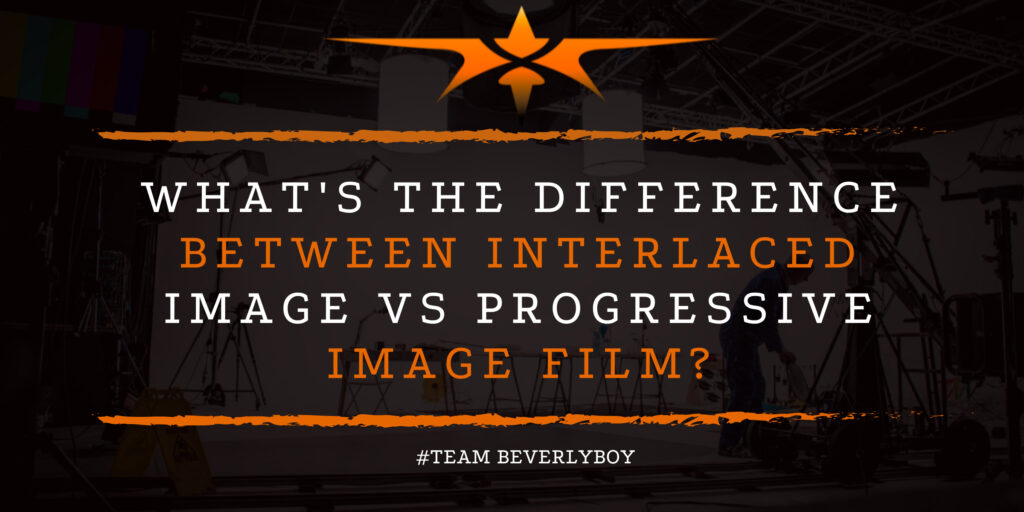What’s the Difference Between Interlaced Image vs Progressive Image Film?
When it comes to displaying broadcast video, two common methods of digital video scanning exist: interlaced image vs progressive image. Film companies must understand the ways that these two shooting standards can impact the films they create. When faced with the decision between interlaced image vs progressive image film, several factors must be considered before a final decision on what’s best for the project can be made. But what’s the difference between interlaced image vs progressive image film, anyway?

INTERLACED IMAGE SCANNING
Interlaced image scanning is a process that involves displaying alternating sets of lines that are numbered even, and odd. Even lines can be seen for 1/60th of a second and the odd lines are then displayed for 1/60th of a second after.
Through a repetitive process in which this occurs over and over again, these even and odd lines are displayed. When the odd lines are displayed, a “field” is created. These rapidly occurring fields produce the illusion of half an image and then immediately after the other half of the image is provided.
PROGRESSIVE SCANNING
When we look at the difference between interlaced vs progressive image film, it’s important to understand each scanning method individual first. Progressive video scanning captures the entire image in a frame.
In capturing one full image per frame, rather than half of an image immediately followed by another half of an image, there is less trouble with motion artefacts in this type of system. Many filmmakers choose progressive video over interlaced video because it has similar visual qualities to film.
WHAT’S THE DIFFERENCE?
So, what’s the difference between interlaced image vs progressive image film? There’s actually several differences between the two. First, progressive scanning is more expensive than interlaced image scanning and due to the pricing it’s not utilized in mainstream production – yet.
Progressive video provides a more visibly clear image than interlaced video, especially since interlaced video tends to have predictable problems with motion often due to camera movement or because the subject moves.
The use of interlaced scanning is common to reduce the amount of bandwidth that is required to transmit video across a network. By transmitting only the frame at a time, lower bandwidth is required to produce the image.
Likewise, progressive scanning requires more bandwidth as potentially double the amount of the image (a full image per frame rather than a half image per frame) is being transmitted.
As we answer the question, “What’s the difference between interlaced image vs progressive image film,” It’s important to note that progressive scans are more crisp, smooth and visible, and they don’t have the same motion artifacting issues that we see in interlaced scans.
Thus, progressive scans provide a better user experience, especially when it comes to viewing sports or action movies that include rapid motion.


